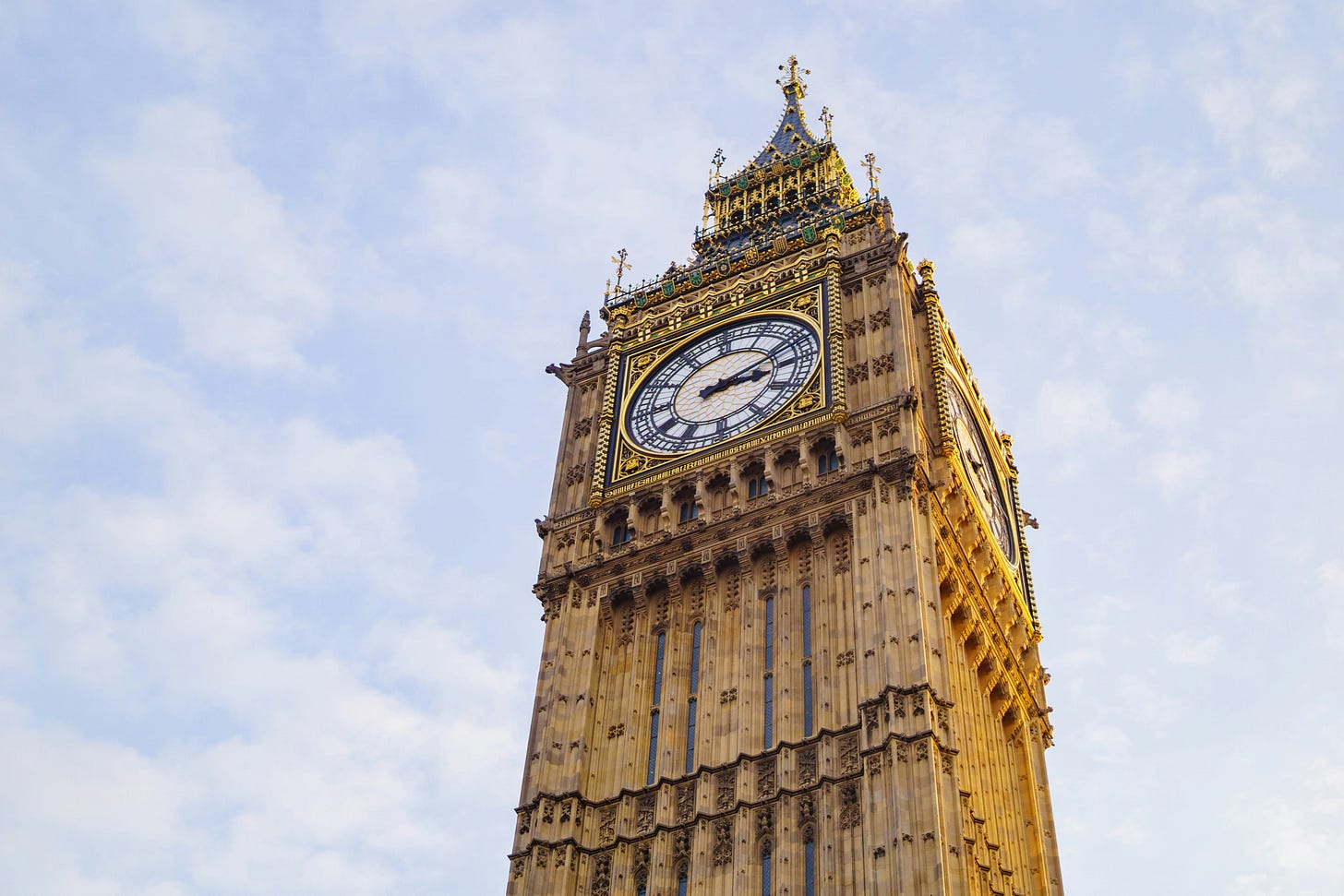Fixing the UK economy
It's the investment rate stupid
By the standards of Westminster’s usual chaos, Britain’s fiscal rules seem sober. They have long promised to contain the government’s borrowing habits, reassuring markets and voters alike that the nation’s finances are not a runaway train.
Yet the rules themselves have changed with almost every chancellor, and their brittle design is beginning to look less like prudence and more like self-harm. Particularly grievous is the way today’s rules are strangling long-term investment in infrastructure, just when Britain’s creaking economy needs it most.
How did we get here?
he UK’s formal fiscal framework began under Chancellor Gordon Brown in 1997, following Labour’s election victory.
Two key fiscal rules were introduced:
The Golden Rule: The government would only borrow to invest over the economic cycle, not to fund day-to-day spending. This was meant to ensure that current expenditure was covered by current revenues.
The Sustainable Investment Rule: Public sector net debt (PSND) should remain below 40% of GDP over the economic cycle.
These rules were monitored by the Treasury itself, with no independent oversight, and applied over a rolling cycle. Over the years, the goalposts were moved to hit a moving target.
For example in 2005, with public borrowing rising and concerns mounting that the government was about to breach its own Golden Rule, the Treasury under Chancellor Gordon Brown revised the official dates of the economic cycle. Instead of running from 1999 to 2005, as previously understood, the cycle was redefined to span 1997 to 2006.
This seemingly technical change had major political and fiscal implications. By extending the start of the cycle back to 1997, the Treasury could include early surpluses from Labour’s first years in office, which offset subsequent deficits. This allowed the government to claim it had met the Golden Rule—that borrowing was used only for investment across the cycle—without altering actual spending behaviour.
The financial crisis of 2008 sent borrowing through the roof (now the responsibility of Alistair Darling), as the government propped up banks and pumped stimulus into a collapsing economy. With little fanfare, Brown’s original fiscal scaffolding was dismantled.
By the time the Conservative-led coalition arrived in 2010, a new orthodoxy had taken hold: austerity. The casualty of this was public investment. Now Treasury orthodoxy drew no distinction between borrowing for a new road and borrowing to pay nurses. In its place came a singular focus on deficit reduction and debt control, not as a means to an end, but as ends in themselves.
Because the rules cap overall borrowing, capital spending often gets the chop when savings are needed. The Office for Budget Responsibility (OBR) is not fooled: it repeatedly warns that public investment is “lumpy” and prone to cancellation when fiscal targets bite.
What’s more, the official forecast period—five years—is used to judge compliance, but the deadline is always rolling, giving the illusion of discipline while allowing convenient wiggle room. This has encouraged chancellors to tinker with taxes and squeeze spending in order to hit targets in a forecast, even when reality diverges wildly.
Indeed, we’ve seen a recent case study in self-inflicted injury. In October 2023, the government scrapped the northern leg of HS2, Britain’s flagship high-speed rail project, citing affordability. Never mind that the cost would have been spread over decades or that private capital was queuing to co-invest. The fiscal rules—as interpreted—declared it unaffordable. So the bulldozers were sent packing. Other projects, from renewable energy infrastructure to flood defences, faced similar fates.
What is to be done?
A better system is not hard to imagine. One option is to revive a version of Brown’s golden rule, adopting a dual framework model: one rule for day-to-day spending, another for public investment, with the latter subject to different borrowing limits and longer time horizons. This would reflect economic reality—roads and railways last for decades—and align public accounting with how businesses and households think about investment.
Another is to create an independent body to assess the long-term value of investment projects, shielding them from fiscal haircuts. Countries like Sweden and the Netherlands have adopted such mechanisms with success, maintaining high levels of infrastructure investment without spooking bond markets.
What has emerged is less a set of durable rules than a ritual of annual reinvention. Each chancellor redraws the lines to suit the moment, offering the appearance of discipline while preserving political room to manoeuvre. The result is a framework that is both rigid and fragile—quick to constrain long-term investment, yet endlessly malleable when short-term politics demand it.
This is a false economy. Britain’s productivity is anaemic, its roads potholed, and its energy grid ageing. The country needs more infrastructure, not less. Borrowing to invest in such assets—especially when interest rates are lower than the economy’s growth rate—is not reckless. It is rational. But the current rules treat all debt as equal, regardless of its purpose or return.
Britain’s fiscal rules were meant to protect the economy from short-termism. Ironically, they have become a source of it. If the country wants to build for the future, it must first unshackle itself from its own accounting games.


